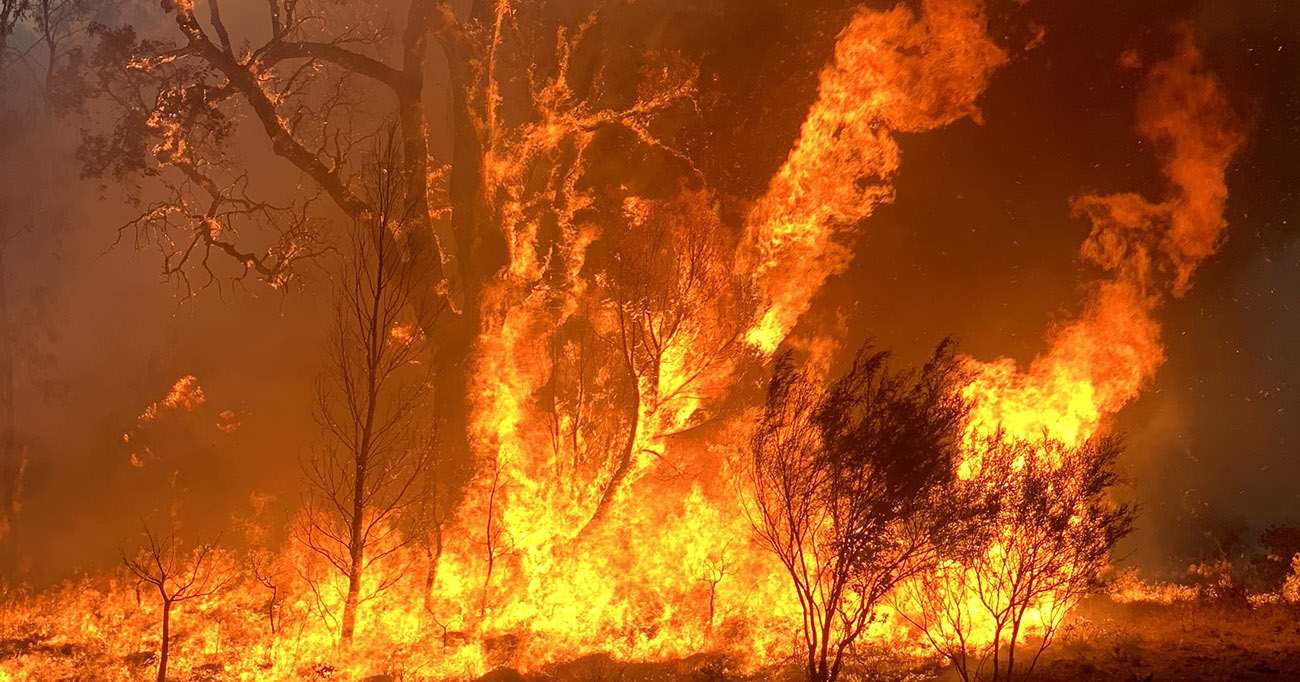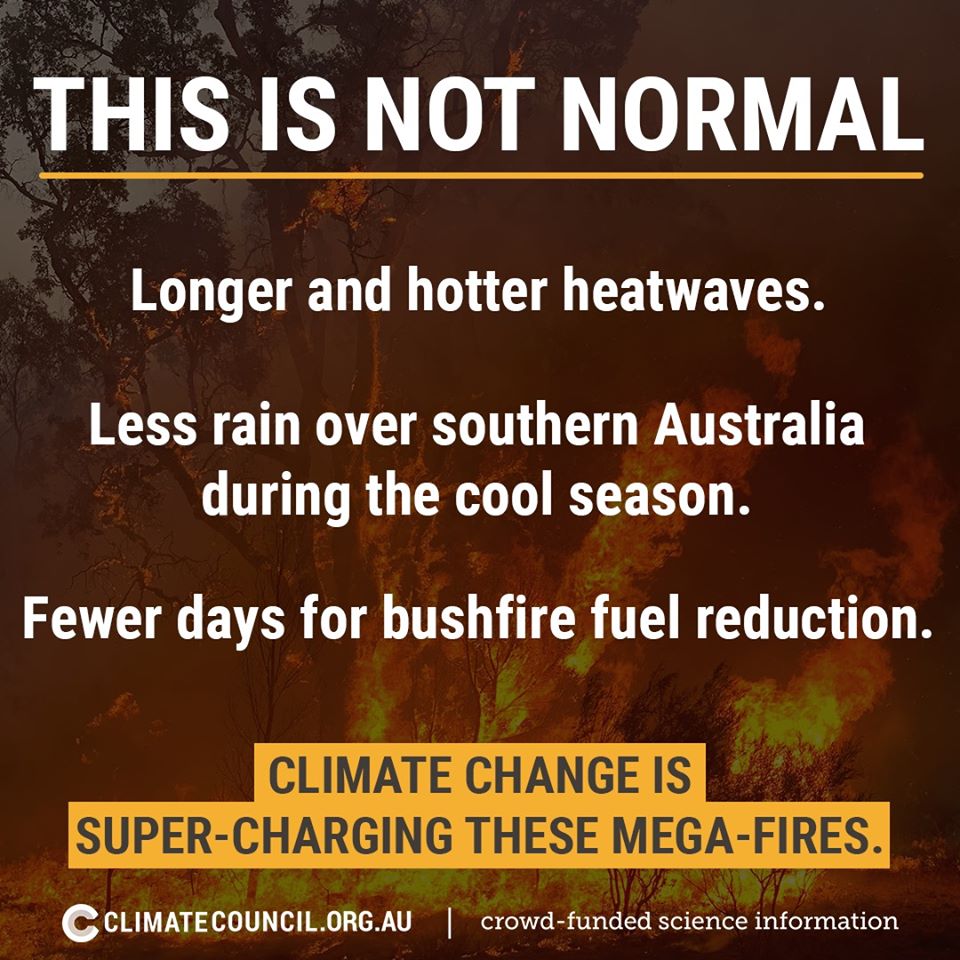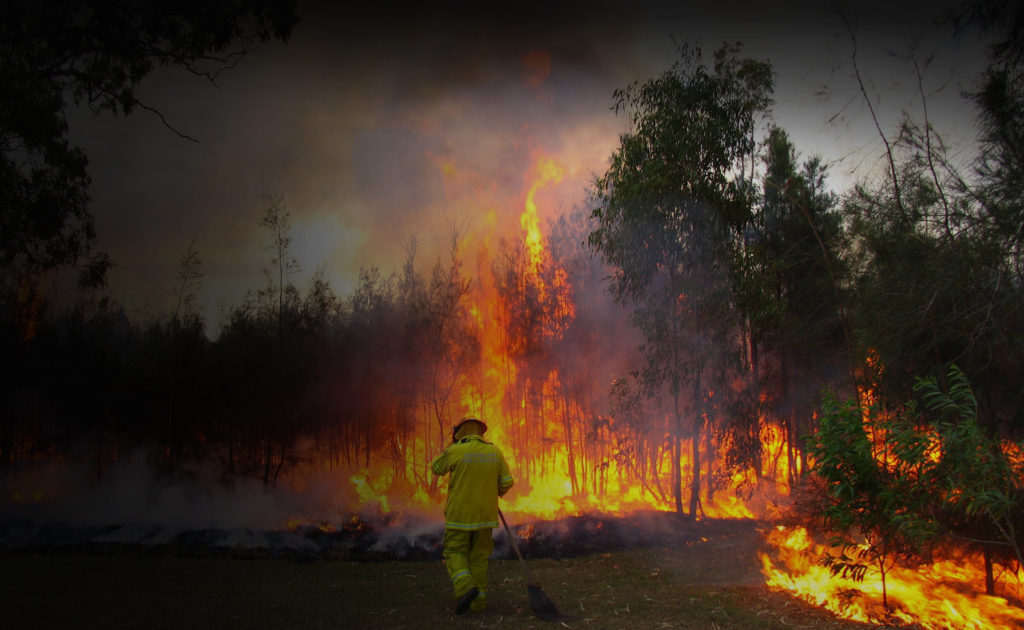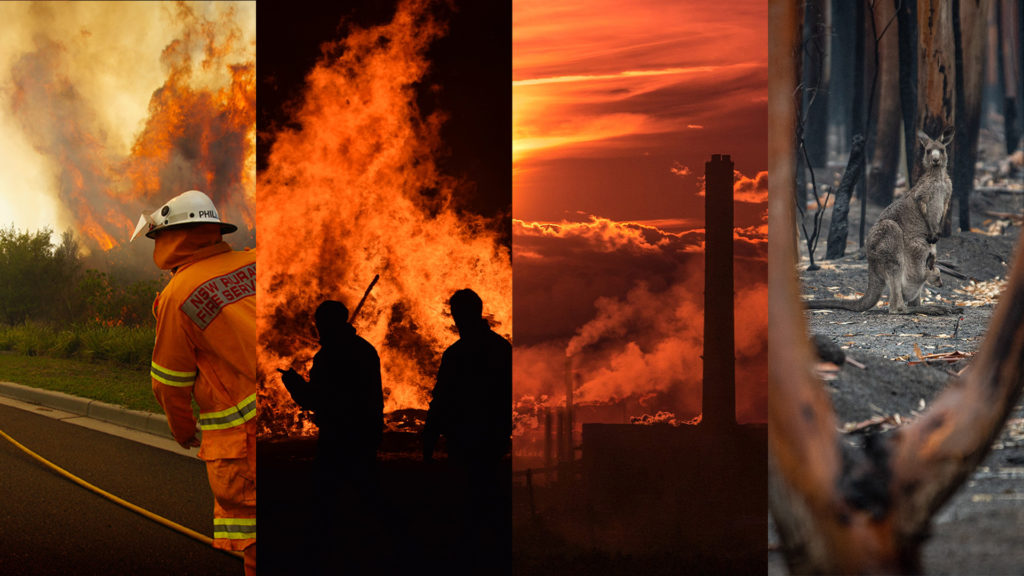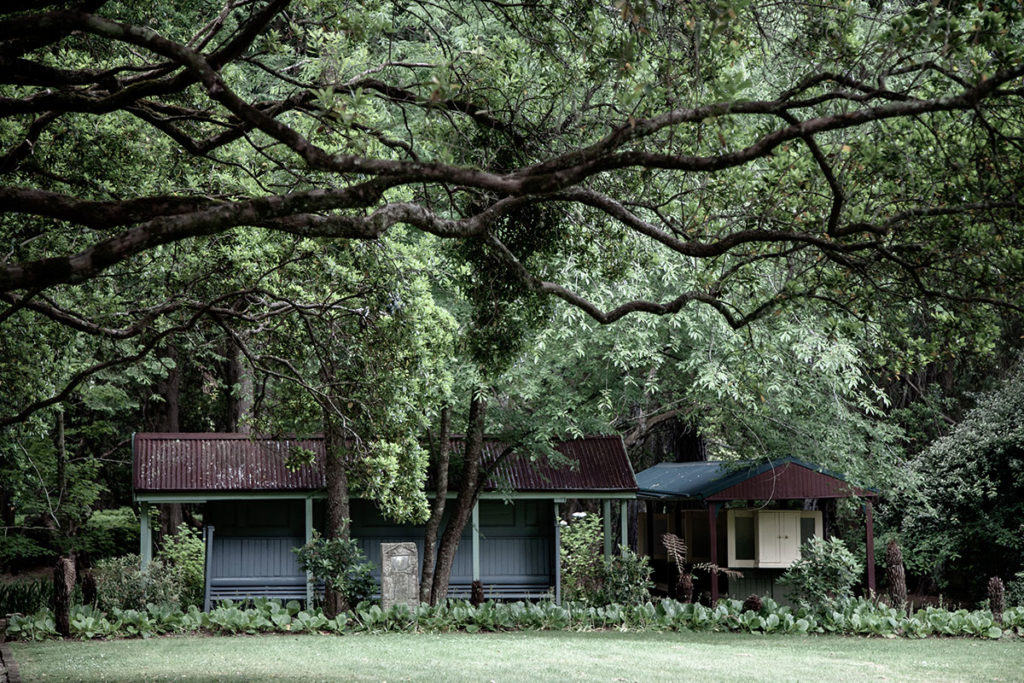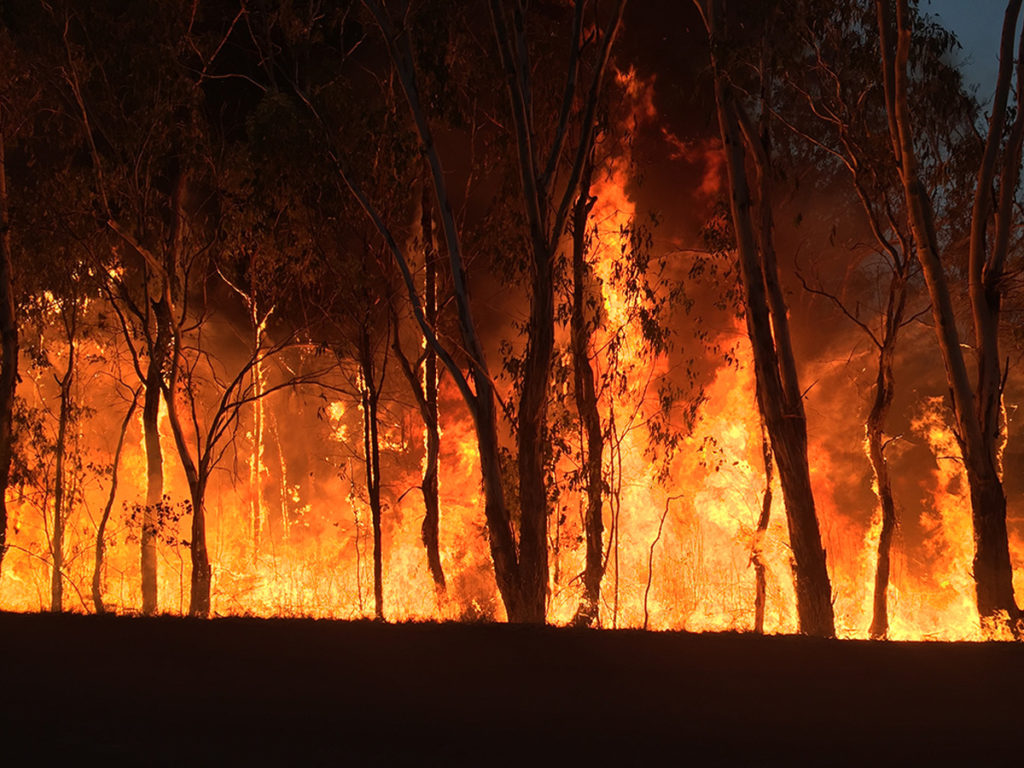The following excerpt is taken from a new Climate Council briefing paper titled This Is Not Normal, which finds the catastrophic bushfire conditions affecting NSW and Queensland have been aggravated by climate change. To read the briefing paper in full, click here.
This is not normal. As we write, New South Wales and Queensland have declared a state of emergency. There are also fires in South Australia and Western Australia. For the first time catastrophic bushfire conditions have been declared for Greater Sydney. Climate change has worsened the catastrophic bushfire conditions. The nature of bushfires in Australia has changed.
Bushfire conditions are now more dangerous than in the past, and the risk to people and property has increased. For well over 20 years, scientists have warned that climate change would increase the risk of extreme bushfires in Australia. This warning was accurate. Scientists expect extreme fire weather will continue to become more frequent and severe without substantial and rapid action to reduce greenhouse gas emissions.
Key Findings
- The catastrophic, unprecedented fire conditions currently affecting NSW and Queensland have been aggravated by climate change. Bushfire risk was exacerbated by record breaking drought, very dry fuels and soils, and record breaking heat.
- Bushfire conditions are now more dangerous than in the past. The risks to people and property have increased and fire seasons have lengthened. It is becoming more dangerous to fight fires in Australia.
- The fire season has lengthened so substantially that it has already reduced opportunities for fuel reduction burning. This means it is harder to prepare for worsening conditions.
- The costs of fighting fires are increasing. Australia relies on resource sharing arrangements between countries and states and territories within Australia. As seasons overlap and fires become more destructive, governments will be increasingly constrained in their ability to share resources and the costs of tackling fires will increase.
- The government must develop an urgent plan to (1) prepare Australian communities, health and emergency services for escalating fire danger; and (2) rapidly phase out the burning of coal oil and gas which is driving more dangerous fires.
DOWNLOAD THE BRIEFING PAPER
Climate change is driving worsening bushfires in Australia.
The burning of coal, oil and gas is driving up global temperatures, leading to hotter Australian conditions. Since the mid-1990s, southeast Australia has experienced a 15% decline in late autumn and early winter rainfall and a 25% decline in average rainfall in April and May. Across Australia average temperature has increased leading to more record breaking hot weather. Extreme fire danger days have increased.
Climate change has worsened the current bushfire crisis.
This year bushfire risk in parts of northeast New South Wales and southeast Queensland has been exacerbated by drought, very dry fuels and soils, and heat. All of these factors have been aggravated by climate change.
Rainfall for January to August 2019 was the lowest on record in the Southern Downs (Queensland) and Northern Tablelands (New South Wales). For example, Tenterfield and Stanthorpe were 77% below the longterm average.
Vegetation has been very dry with parts of New South Wales and Queensland experiencing record low soil moisture. The low soil moisture is symptomatic of both the recent intense dry conditions, as well as longer-term below average rainfall since 2017.
Drought means vegetation is more flammable and therefore more likely to support extreme fire behaviour and spot fires. Heat is a factor too, both exacerbating dry conditions and enabling sparks to take hold. For instance, virtually the whole of the Murray-Darling Basin has experienced record-breaking heat this year.
Climate change is lengthening the bushfire season. The northern and southern hemisphere seasons are now overlapping, making it difficult to pool resources such as personnel and firefighting equipment. The opportunity for hazard reduction burning to limit the threat of bushfires is closing, with all year round bushfires.
Greg Mullins, Climate Councillor and Former NSW Fire and Rescue Commissioner talking to 10’s The Project on how climate change is impacting hazard reduction burns.
Fire risk will continue to escalate in the future without sustained and substantial efforts to tackle climate change.
Australia is a substantial contributor to global climate change through the domestic burning of coal, oil and gas, as well as our fossil fuel exports. We are the 16th largest emitter globally and one of the largest exporters of coal and gas in the world.
Our emissions have increased the past five years without a credible Federal policy to reduce emissions. This briefing paper unpacks the unprecedented bushfire conditions unfolding in southern Australia, explaining why the conditions are so unusual, the influence of climate change on bushfires, and the challenges of responding to the growing bushfire threat.
What is so unusual about these bushfire conditions?
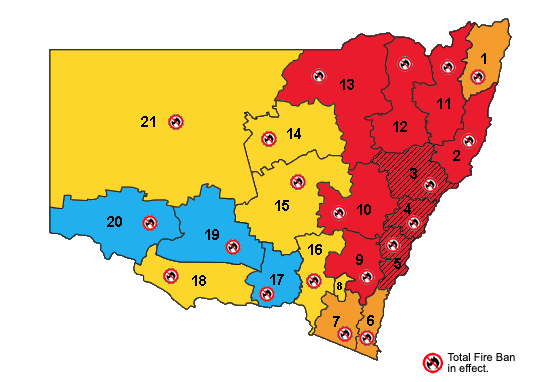
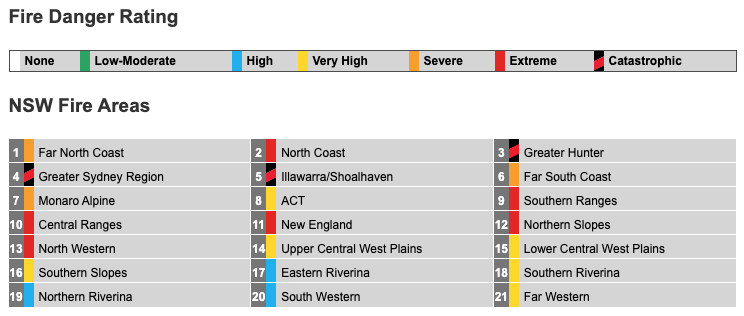
Catastrophic fire danger ratings are in place for Tuesday 12 November across Greater Sydney (including the Blue Mountains and Central Coast), the Greater Hunter and the Illawarra and Shoalhaven regions.
This is the first time that a catastrophic fire danger rating has been forecast for Sydney since the catastrophic fire danger rating was introduced in 2009. It is also the first time a catastrophic bushfire danger rating has been declared over such a densely populated area — covering around six million residents across eastern New South Wales. Severe and Extreme fire danger ratings are in place across large tracts of the rest of the state.
Catastrophic is the highest fire danger rating. Fires in catastrophic conditions cannot be fought safely and homes are not built to withstand fires in these conditions. Lives and homes are at serious risk if a fire starts under these conditions. Total fire bans are in place across the whole of NSW, and a State of Emergency has been declared across New South Wales. Queensland has also declared a State of Emergency.
Already, fires have burned through one million hectares in New South Wales. With months left of the fire season, this is almost as much as has been burned in New South Wales during the last three fire seasons combined. In New South Wales, the worst fire seasons have generally been during El Niño events, and the worst property losses have occurred from November to February.
There have only been a handful of occasions when property losses have exceeded 100 homes over the whole bushfire season. This year, at least 150 homes have already been destroyed up to early November, but this number is very likely to rise. There is only one occasion when more homes have been lost so early in the bushfire season in New South Wales — the October 2013 fires that destroyed more than 200 homes in the Blue Mountains. This fire was made worse due to climate change exacerbating hot, dry conditions.
The fires that led to the loss of these 150 properties were ferocious. On Friday 8 November, the NSW Rural Fire Service sent out an alert that fires were creating their own thunderstorms (an example of pyroconvection). This leads to extremely dangerous bushfires, with strong winds and lightning generated from the storms, worsening the bushfires on the ground.
The 2003 Canberra bushfires and the 2009 Black Saturday bushfires were examples of pyroconvective events. These conditions are more likely to occur when atmospheric instability is high, combined with dangerous near-surface conditions (e.g. low humidity, strong winds and high temperatures). But on Friday, the atmosphere was relatively stable and therefore shouldn’t have been conducive to these wildly unpredictable and dangerous events. Yet it happened.
READ MORE – DOWNLOAD BRIEFING PAPER HERE
How is climate change influencing bushfires?
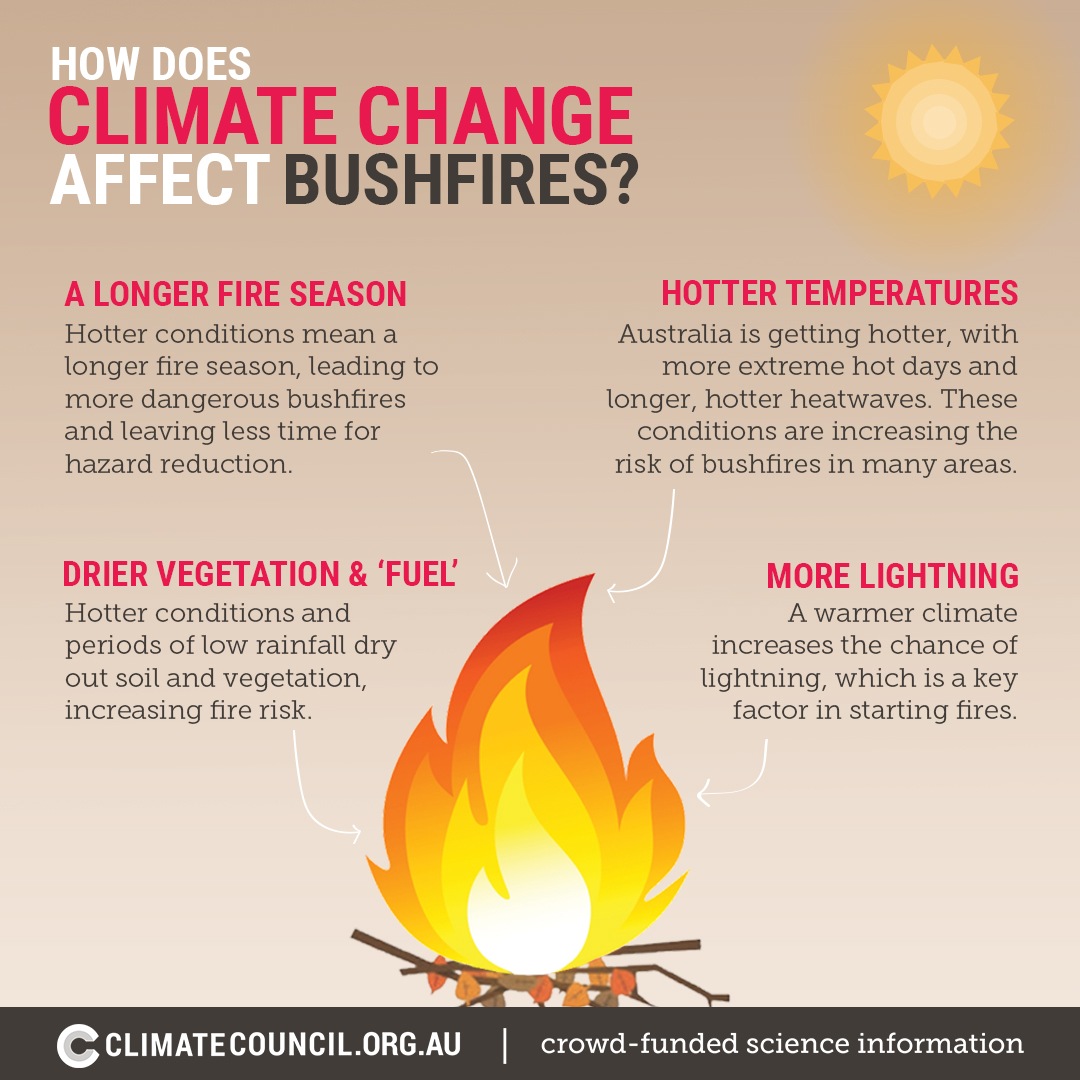
A fire needs to be started (ignition), it needs something to burn (fuel), and it needs conditions that are conducive to its spread (suitable weather) (Figure 2). Climate change, primarily driven by the burning of fossil fuels – coal, oil and gas – can affect all of these factors in both straightforward and more complex ways.
Long-term global warming, now about 1°C above pre-industrial levels, is increasing temperatures. Nine of Australia’s top ten warmest years on record have occurred since 2005 (BoM 2019a). At the same time, a decline in cool season rainfall in southeast Australia is contributing to an increased likelihood of more dangerous bushfires. Extreme fire weather has increased over the last 30 years in south and east Australia. The most extreme 10 per cent of fire weather days has increased in recent decades across many regions of Australia, especially in southern and eastern Australia (BoM 2019b; Figure 3).
Hot days and heatwaves

The most direct link between bushfires and climate change comes from the long-term trend towards a hotter climate. Climate change is now making hot days hotter, and heatwaves longer and more frequent.
In Australia, the annual number of hot days (above 35°C) and very hot days (above 40°C) has also increased strongly over most areas since 1950. Heatwaves are also lasting longer, reaching higher maximum temperatures and occurring more frequently over many regions of Australia (Perkins-Kirkpatrick et al. 2016).
In Melbourne from 1951–2011, the average intensity of heatwaves has increased by 1.5°C and the average intensity of the peak day during a heatwave has increased by 2°C. This has implications for bushfire danger weather. For example, the 2009 Black Saturday fires in Victoria were preceded by a decade-long drought with a string of record hot years, coupled with a severe heatwave in the preceding week. The weather conditions on February 7 broke temperature records, with maximum temperatures up to 23°C above the February average in Victoria and record high temperatures for February set in over 87% of the state (BoM 2009a; BoM 2009b). Over this period, the Forest Fire Danger Index (FFDI) ranged from 120 to 190, the highest values ever recorded (Karoly 2009).
In 2019, New South Wales and Queensland had an early and devastating start to the bushfire season with hot temperatures throughout the year making many districts primed for high bushfire danger ratings. In 2019, New South Wales had its warmest January to August period on record for overall mean temperature (1.85 °C above average), and Australia as a whole had its warmest on record such period for maximum (daytime) temperature (1.71 °C above average) and was second-warmest for mean temperature (1.30 °C above average, behind 2016). Maximum temperatures on the 5th and 6th September were more than 10 °C above average in some areas (BoM 2019b).
Low Rainfall
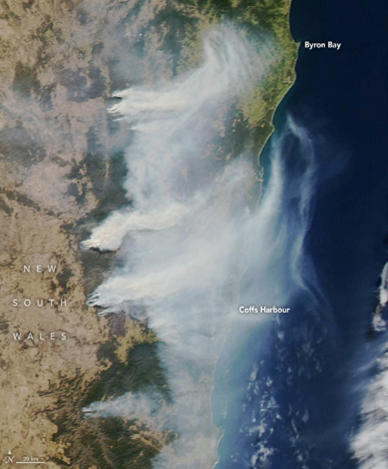
Declining cool season rainfall has had a significant impact on increasing bushfire risk. Since the mid-1990s, southeast Australia has experienced a 15% decline in late autumn and early winter rainfall and a 25% decline in average rainfall in April and May. Climate change is influencing this drying trend.The 2019-20 bushfire season in New South Wales and southeast Queensland had an early and devastating start in August 2019. From 9 August, bushfire risk in parts of northeast New South Wales and southeast Queensland was exacerbated by rainfall that was below average on a range of timescales from months to years leading to a prolonged and severe drought, and very high dryness factors for fuels. Rainfall for January to August 2019 was lowest on record in the Southern Downs (Queensland) and Northern Tablelands (New South Wales). For example, Tenterfield and Stanthorpe were each more than 20% below their previous record low January–August rainfall (and 77% below the long-term average) (BoM 2019c). The soils were also very dry. The top 100 cm of the soil profile was below average to driest on record for the first week of September 2019 over most of southeast Queensland and northeast New South Wales. The low soil moisture is symptomatic of both the recent intense dry conditions, as well as longer-term below average rainfall since 2017. Low soil moisture means high stress in the vegetation and fuels that might not normally burn become prone to bushfires (BoM 2019c).
Fuelled by a long and deepening drought, more than 100 fires burned in forest and bush areas in southeast Queensland and northeast New south Wales, including in some areas of subtropical rainforest and wet eucalyptus forests that do not often experience fire (NASA 2019; Figure 5). The drying effect of the drought makes vegetation more flammable, and therefore more likely to support extreme fire behaviour. It also makes vegetation more susceptible to spot fires ahead of the main fires when weather conditions deteriorate (high temperatures, low relative humidity, strong winds).
Lengthening seasons
Since the 1970s, there has been an increase in extreme fire weather and a lengthening of the fire season across large parts of Australia, particularly in southern and eastern regions, due to increases in extreme hot days and drying.
The lengthening seasons are reducing opportunities for fuel reduction burning (Matthews et al. 2012; Ximenes et al. 2017) and increasing the resource needs of firefighting services. The lengthening fire season means that opportunities for fuel reduction burning are decreasing.
Greg Mullins travelled to California with the 7.30 report to highlight the dangerous overlap in fire seasons and urge Scott Morrison to heed the warnings of the Emergency Leaders for Climate Action. Aired the week before the catastrophic conditions in NSW and QLD.
What are the challenges in responding to these changing fire conditions?
When fires start during catastrophic conditions, it is often impossible to control them. It makes the situation extremely dangerous for communities and firefighters. Therefore the best thing to do if you live in a bushfire prone area is to leave early.
The challenges in responding to catastrophic fire conditions are exacerbated by lack of sufficient resources. This has been compounded by recent funding cuts for firefighting in the New South Wales Government’s 2019-20 budget.
READ MORE: DOWNLOAD BRIEFING PAPER HERE
What is expected in the future?
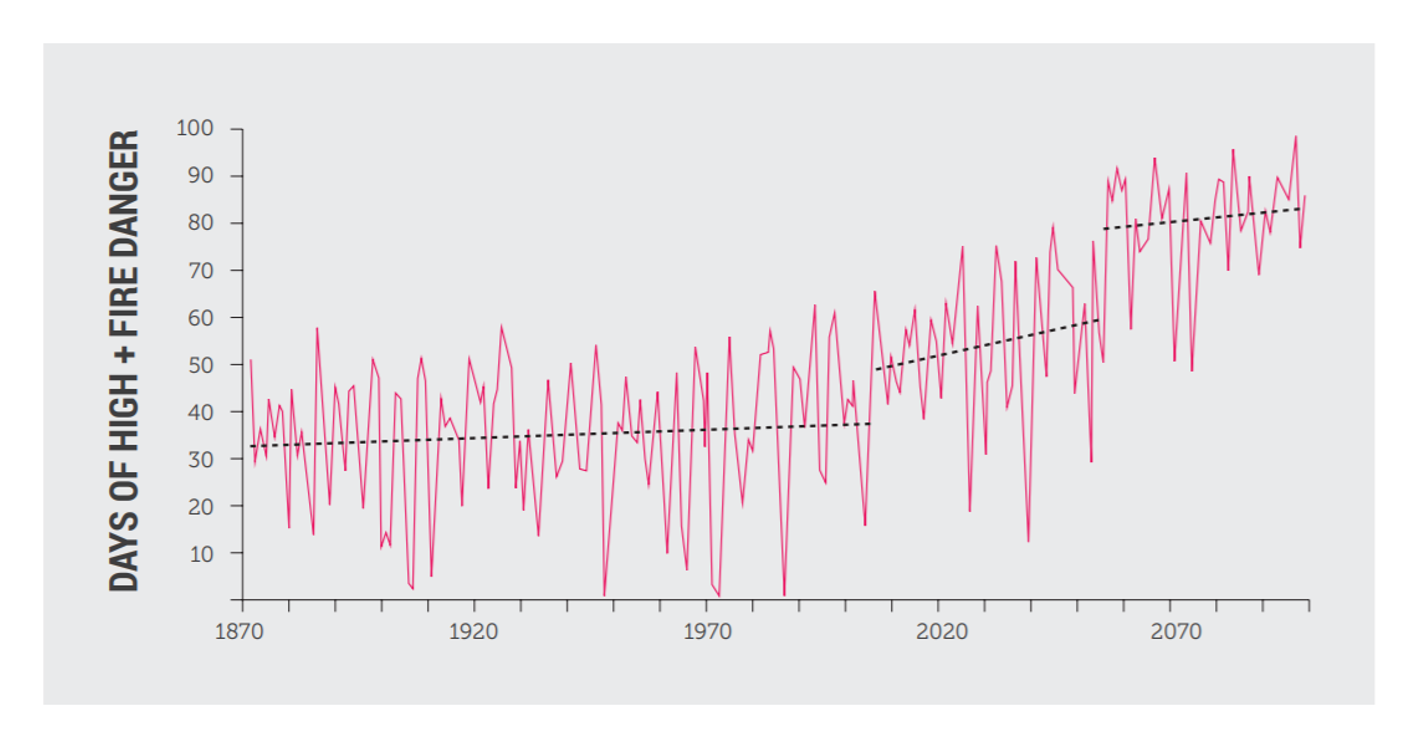
model run of annual maximum temperature and total rainfall from a grid square over
Melbourne from the CSIRO Mark 3.5 A1B model, based on Laverton data). Source: Jones et
al., 2013.
Climate change is exacerbating catastrophic bushfire conditions. By 2020, the number of ‘very high’ or ‘extreme’ fire days could increase by 4-25%, and 15-70% by 2050 (Hennessy et al. 2005; The Australia Institute 2007).
Sadly, the catastrophic events that are unfolding in Australia are a prelude to the future. This is not normal. Now is the time to act decisively and swiftly by deeply and rapidly reducing greenhouse gas emissions and preparing our brave emergency and fire services and communities for the growing bushfire threat.
What can be done?
As bushfire conditions are forecast to escalate, the most important thing is to stay alert and listen to the official warnings and directions of the emergency services.
- In NSW, by visiting the NSW Rural Fire Service Fires Near Me page and downloading the app.
- In Queensland, by visiting the Queensland Rural Fire Service page.
- If these apps and sites become unavailable, the official data is duplicated at: http://google.org/crisismap/australia.
- Your local ABC radio should be reporting regularly on the status of bushfires in your area, or follow ABC Emergency on Facebook for regular updates from emergency services.
Policy/government preparedness for bushfires
“We need urgent emissions reductions, and a coordinated national effort on coping with worsening extreme weather disasters”. Greg Mullins, Climate Councillor, member of the Emergency Leaders for Climate Action and Former NSW Fire and Rescue Commissioner (Climate Council 2019).
The government must develop a plan for escalating fire danger in Australia. It is crucial that communities, emergency services, and health services are well prepared for the increasing severity and frequency of extreme fire conditions.
As fire risk increases, disaster risk reduction and adaptation policies will play a critical role in reducing risks to people and their assets. Increased resources for our emergency services and fire management agencies will be required (Climate Council 2014b; Climate Council 2014c). In particular, we will need increasing numbers of firefighters.
These calls for planning and preparedness are not new, but the government has repeatedly failed to heed them. In 2013, Mr Gary Morgan, CEO Bushfire CRC, told the Senate Inquiry into Recent trends in and preparedness for extreme weather events “current practices will not sustain [fire agencies] into 2020” (Climate Council 2014a).
We must cut our greenhouse gas emissions rapidly and deeply to reduce the impact of future bushfires and other extreme events. Burning fossil fuels, like coal, oil and gas, must be phased out. Yet Australia’s emissions have been rising year-on-year for the past five years (Department of the Environment and Energy 2019) and the Federal Government has no credible policy to reduce greenhouse gas pollution. Australia is not on track to meet even its dismal Paris target of 26-28% below 2005 levels by 2030.
We have the solutions at our disposal to tackle climate change: we need to accelerate the transition to renewables and storage technologies, and non-polluting transport, infrastructure, and food production. Now we need to Federal Government to step up to protect Australian lives from worsening disasters in the future.

